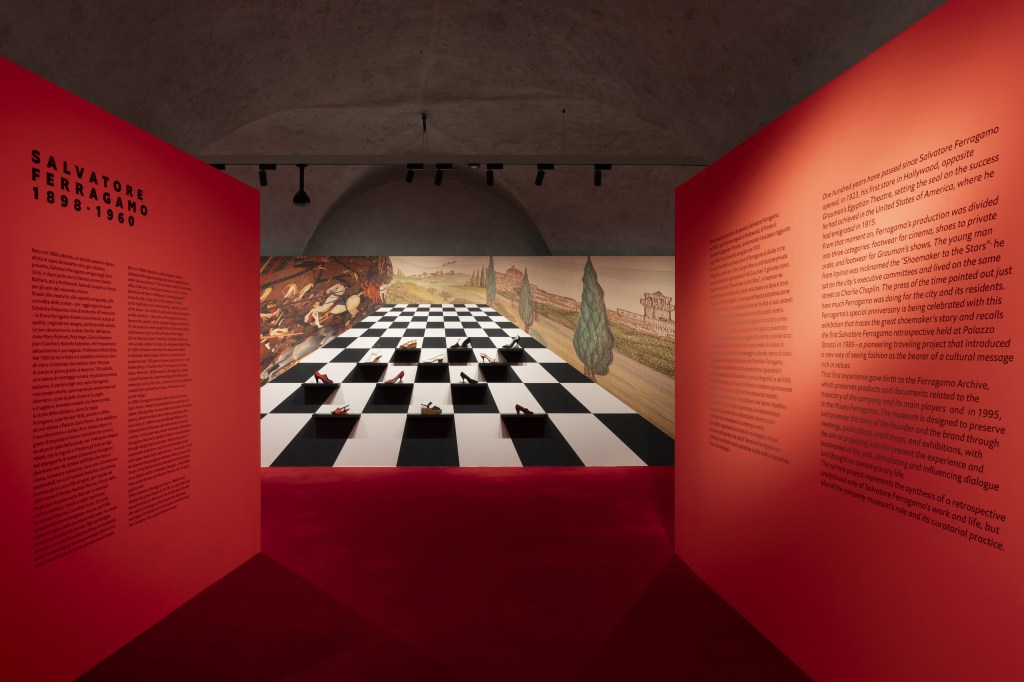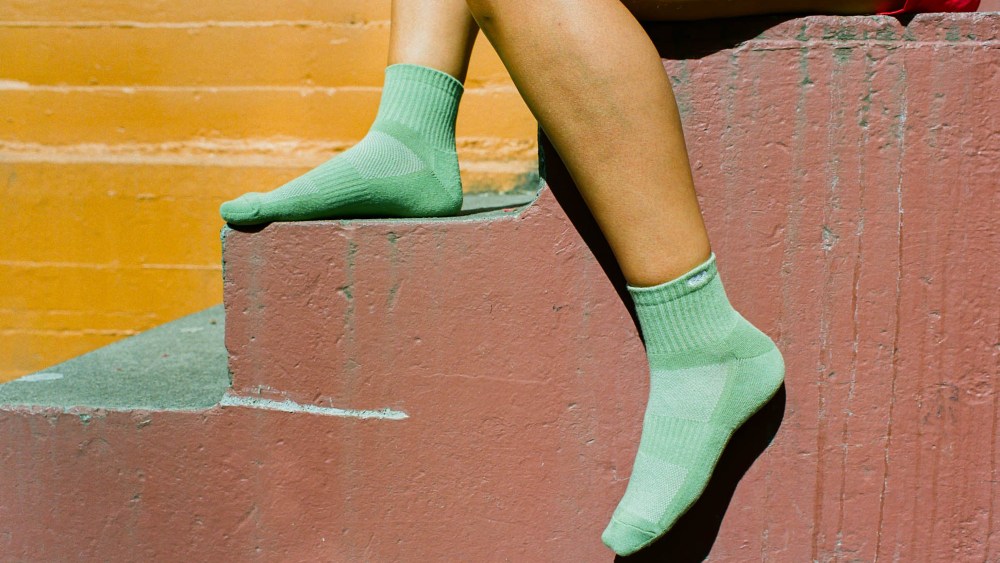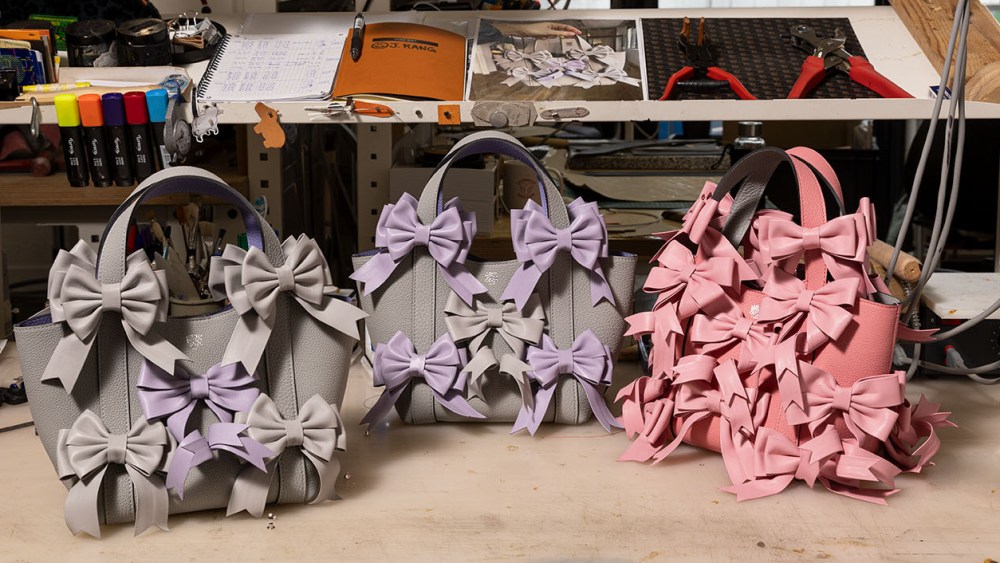FLORENCE — There is a hall in the new exhibition Ferragamo staged here that stands out and hits differently than the others: a room displays many, yet only just a small part of, the 369 patents filed by the brand’s founder Salvatore Ferragamo.
In times when creativity can take a backseat to commercialism and the quest for innovation can be relegated to a secondary role, such a display resonates even more loudly and marks another testament to the pioneering vision of the company’s founder, his resourcefulness in times of scarcity, as well as curiosity and passion for the shoe craft that marked his life and career.
All these elements intertwine in the show, which traces the founder’s history through shoes, photographs, sketches, artworks, documents and videos spanning a period that covers his whole life, from his birth in 1898 to his premature death in 1960.

Simply dubbed “Salvatore Ferragamo 1898-1960,” the exhibit opening to public on Friday and running through Nov. 4, 2024, casts a new light on the founder and his pivotal role not only in fashion but design and culture at-large.
For these reasons the emotion was palpable on Thursday when the Ferragamo family members welcomed press and guests to preview the show at Museo Ferragamo, which is located in the same 13th-century Palazzo Spini Feroni that has housed the company’s headquarters since 1938.

“This is a special exhibition for width, depth and beauty,” said the firm’s chairman Leonardo Ferragamo during his introduction. He was joined by sister Giovanna Gentile Ferragamo and brother Ferruccio, alongside the firm’s chief executive officer Marco Gobbetti and Museo Ferragamo’s director Stefania Ricci.
Ferragamo drew parallels with the first retrospective the company dedicated to the founder, which was staged in 1985 at Palazzo Strozzi, before becoming an itinerant show that touched base at the likes of the Victoria and Albert Museum in London; the Museum Bellerive in Zurich; the Los Angeles County Museum in California; the Sogetsu Kai Foundation in Tokyo and the Museo des Bellas Artes in Mexico City.
Even if the two exhibits cover the same period of time, they differ in perspective and approach. In the previous show, shoes were displayed chronologically as artworks, with little reference to the creative and social context in which they had been designed. In the new one, creations are presented not only to highlight their aesthetic value but also their innovation, correlation to arts and impact on culture.

The chairman additionally recalled that the 1985 show led to the creation of the Ferragamo Archive and consequentially the Museo Ferragamo 10 years later as a location to conserve and promote the heritage of the brand through thematic shows, meetings, publications and workshops, as well as put it in conversation with contemporary topics sparking new ideas on creativity, craftsmanship and sustainability.
“Ever since, 35 Ferragamo exhibitions have been staged in Italy and abroad over the years, but this has a different meaning,” said Ferragamo.

The opportunity to commemorate the founder stemmed from the centennial of his opening his first store in Hollywood, known as the Hollywood Boot Shop and considered the first real luxury boutique of the brand after Ferragamo opened small shops in his hometown in Bonito, Italy, and in Santa Barbara, Calif.
The two-storied location stood opposite Grauman’s Egyptian Theatre, which fueled the brand’s connection with the world of cinema. The Egyptian Theatre hosted theatrical performances and Hollywood premieres, including “The Ten Commandments” movie directed by Cecil B. DeMille, who asked Ferragamo to design and make the shoes for the main characters. From that moment, Ferragamo’s Hollywood experience consisted of making shoes for films and performances at the theater, in addition to made-to-order creations for private customers, earning him the nickname of “Shoemaker to the Stars.”

The store itself appeared in the 1928 movie “Show People” directed by King Vidor, as documented by a movie clip screened in one of the nine thematic area the exhibition is divided into.
Dubbed “Hollywood Boot Shop,” the room arrays shoes from Ferragamo’s American years, including those designed for “The Ten Commandments,” calfskin sandals created for the 1927 movie “The King of Kings” and laced shoes with hand-painted heel that Ricci recently found on eBay. It is a treasured discovery because the insole label exclusively reads “Ferra-Gamo Inc. Florence Hollywood” and features seared emblems of the U.S. and the Kingdom of Italy.

The room is accessible after going through an entry hall dominated by an artwork blending three different references: Paolo Uccello’s 15th-century painting “Battaglia di San Romano” showcased at the city’s Uffizi Galleries; an image of the Tuscan countryside, and a chessboard floor evoking the one at Ferragamo’s first shop in Florence in the early ‘30s.
“It’s significant because at the time Ferragamo used that flooring to creatively display his shoes. He was an innovator also in presenting the product,” noted Ricci. She referenced that the Hollywood store was also disruptive for its Renaissance-style interiors and furniture “conceived to tie his shoes with that idea of Italy, its art and culture that Americans loved so much.”

The exhibition’s entry hall is decked with additional photographs and documents of key moments in Ferragamo’s life, spanning from images of his hometown Bonito to those teaching young apprentices how to make shoes in the ‘30s; from his wedding day and receiving the Neiman Marcus Award in 1947 to drawings made by Andy Warhol in the ‘50s.
Further connections with artworks of different eras are explored in an expansive room dedicated to his inventive use of humble materials such as fish skin, wood, raffia, hemp, cork and even cellophane obtained by twisting candy wrappers — all creatively employed way before upcycling became trendy.

Juxtapositions between shoes and artworks further spotlight Ferragamo’s inspirations, with paintings by Sonia Delaunay and Kurt Schwitters flanking patchwork footwear, or a 1938 laced boot with a tip shaped like a rhinoceros horn standing next to the “Histoire Naturelle” artwork by Max Ernst with the same animal as subject.
The founder’s extensive study of anatomy, foot balance and body weight distribution is explored in another area showcasing an extract of his personal library, which comprised unexpected tomes.
“An Essay Concerning Human Understanding” by John Locke that addresses the value of experience and metaphysical matters stands next to texts on radio and electromagnetic waves or on astronomy, telegraphing the wide scope of Ferragamo’s curiosity. In addition, chalk molds used by the founder and his nephew Jerry to perfect fitting also appear in the room, alongside wooden shoe lasts of renowned actresses and regular clients such as Audrey Hepburn, Marlene Dietrich and Bette Davis.

The museum itinerary continues with a window showcasing eight all-black styles intended to put the accent on the architectural shapes in the founder’s work, which leads to the room dedicated to patents.
Here, inventions take center stage, such as the cork wedge heel Ferragamo came up with in 1937, when economic sanctions imposed on Italy made impossible to import German steel that the founder used in shoes to make the metal last under the foot arch.
Other examples include the iconic “Invisible” sandal with the upper made of nylon thread; the 1941 multilayer raised sole; the 1946 patent for a non-slip sole for children’s shoes that could prevent feet from twisting inward; the 1952 design for a low-cut pump with a high heel in which only the toe and the tip of the heel had a sole, making the shoe flexible; the 1956 cage heels in metal nodding to Art Nouveau, and the shell-shaped sole referencing organic architecture.

“All these patents are the ultimate testimony to his ingeniousness,” said Davide Rampello, creative director of the Rampello & Partners studio that created a video installation for the exhibit. “For me we need to add to Ferragamo’s profile that he has been one of the protagonists of Italian design, just like Gio Ponti and Carlo Mollino… He’s been much more of what we have defined him so far, as he really started that journey of Italian design.”
Rampello’s studio developed four short documentaries on craftsmanship that are screened in a room spotlighting a unique piece in the Ferragamo archives: the 18-karat gold sandal the founder created in 1956 for an unnamed American customer and that cost $1,000 at the time.

Inspired by the Italian goldsmith tradition and artworks of the 16th century, Ferragamo patented a complex construction method for the sole and heel in metal, which, despite being rigid, could be as comfortable as a leather shoe, while allowing rich embellishments via refined engraving and chiseling carried out by Florentine goldsmiths. Incidentally, current creative director Maximilian Davis included a rendition of the style in the brand’s fall 2023 collection.
An alcove decked in multicolors further celebrates Ferragamo’s exuberant ethos, spotlighting the vibrant hues, patchworks and optical effects the founder used in his creations and that marked a disruptive approach in times where footwear mainly came in classic tones.

The final room of the show highlights the connection with movie stars, aristocrats and international jet-setters. Standout pieces include an array of the signature four-inch-heeled pumps designed for Marilyn Monroe, such as the 1960 sparkly red ones that Davis reprised in pants form in his debut collection for the brand; the iconic Rainbow sandal designed for Judy Garland; flats created for Audrey Hepburn and Georgia O’Keeffe; wedges made for Greta Garbo and Peggy Guggenheim; the 1957 Damigella brocade boots, and 1955 Tavernelle lace and satin sling-backs created for Sophia Loren and Anna Magnani, respectively.
But the company’s current chairman actually praised other “two extraordinary women” on Thursday.

“My mother, who felt a very strong vocation to make her six children aware of all the history, values and anecdotes that my father cultivated and collected in his life, as well as advocate of the desire to create an archive and an exhibition on her husband,” said Ferragamo of Wanda Ferragamo. “And then my sister Fiamma, who picked up this thought and made it her own, taking the reins with courage and an extraordinary vision, giving a profoundly cultural and historical angle to that project.
“I believe my father’s story is a pillar in the history of fashion and certainly an extraordinary privilege we have experienced as a family. With my mother we have formed an extraordinary team for many years in order to carry forward his dreams… and all these values have permeated the company, which has a fantastic human capital… I believe that today more than ever these values are standing out,” he continued.

The chairman additionally acknowledged the new creative direction of the brand under Davis, “who has understood the artistic richness of Florence and took it as a source of inspiration to design the Ferragamo style of the future, extracting from our history those values that he feels to be very strong: elegance, femininity, qualitative excellence, innovation and calculated experimentation — aimed at strengthening this Ferragamo style over time.
“I believe that my father would be happy and proud of all this and, above all, of the great effort we are making today,” concluded Ferragamo.



